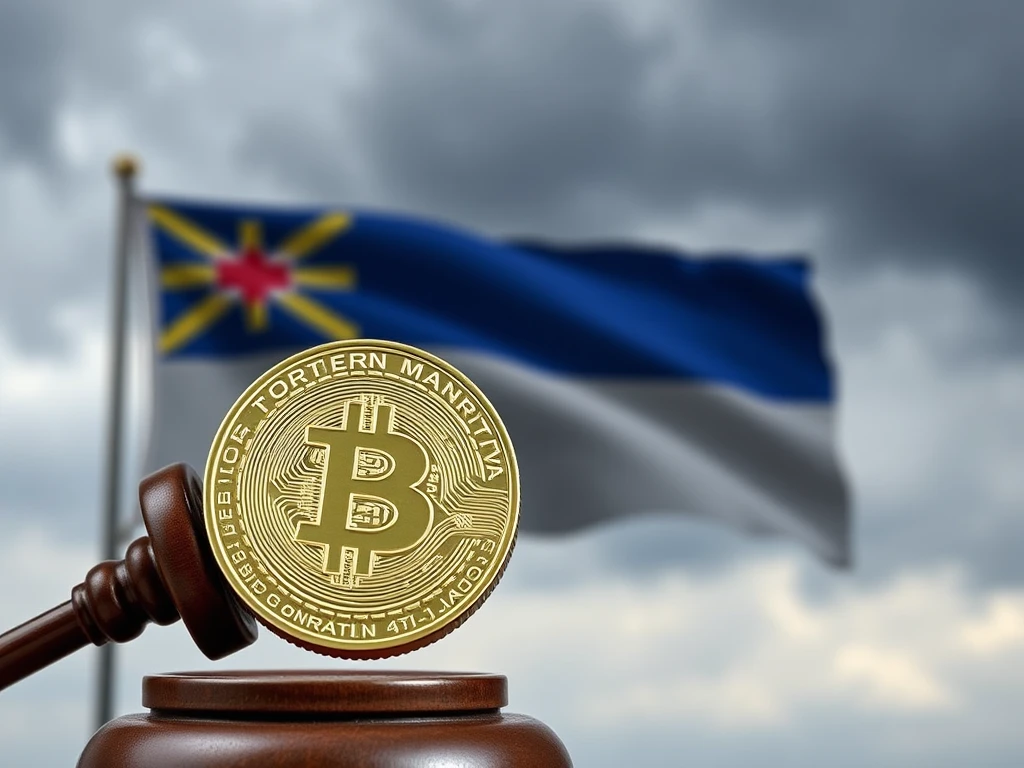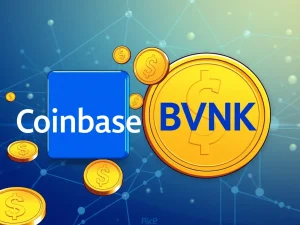Stalled Vision: Northern Marianas Governor Rejects Tinian’s Bold Stablecoin Plan

In a surprising turn of events for the burgeoning digital currency landscape, the Northern Mariana Islands Governor, Arnold Palacios, has delivered a setback to Tinian’s ambitious plan to launch its own USD-backed stablecoin. Just when Tinian aimed to potentially outpace Wyoming in the race to become the first US entity to issue a government-backed digital currency, this veto throws a wrench into the works. Let’s delve into the details of this crucial decision and explore what it means for the future of crypto regulation and stablecoin adoption in the region.
Why Did Northern Marianas Veto the Tinian Stablecoin Bill?
Governor Palacios cited significant “legal issues” and potential unconstitutionality as the primary reasons for vetoing the bill. In his letter dated April 11th, he expressed concerns that the legislation, which was initially focused on licensing internet casinos, inadvertently extended its regulatory reach into areas that couldn’t be geographically limited to Tinian.
Here’s a breakdown of the Governor’s key concerns:
- Jurisdictional Boundaries: The Governor argued that regulating activities like internet casinos, and by extension the stablecoin, couldn’t be effectively confined to Tinian due to the nature of the internet.
- Legal Ambiguities: Palacios highlighted “several legal issues” without specifying them in detail, suggesting potential conflicts with existing laws or constitutional principles.
- Enforcement Deficiencies: The veto letter also pointed out a lack of “robust enforcement measures” within the bill to effectively prevent illegal gaming activities, implying similar concerns might extend to the management and oversight of the proposed digital currency.
Interestingly, the Governor’s veto statement largely sidestepped direct criticism of the stablecoin proposal itself. His focus remained on the broader regulatory and enforcement challenges associated with the internet casino licensing aspect of the bill, which was the main vehicle for introducing the stablecoin provision.
Tinian’s Vision: A USD Stablecoin to Boost the Local Economy
For those unfamiliar, Tinian is a small island within the Northern Mariana Islands, with a population of just over 2,000 people and an economy heavily reliant on tourism. The local government, the Municipality of Tinian and Aguiguan, saw the stablecoin, dubbed the Marianas US Dollar (MUSD), as a potential catalyst for economic growth and innovation.
The proposed MUSD was designed with these key features:
- USD-Pegged: It was intended to be a USD stablecoin, meaning its value would be pegged 1:1 to the US dollar, offering stability and ease of use.
- Fully Backed: The MUSD was to be fully backed by reserves of cash and US Treasury bills held by the Tinian Municipal Treasury, ensuring its solvency and credibility.
- eCash Blockchain: The chosen blockchain for launch was eCash, a fork of Bitcoin Cash, known for its fast transaction speeds and low fees.
- Marianas Rai Corporation: A tech firm based in Saipan was selected to provide the infrastructure for issuing, redeeming, and managing the MUSD ecosystem.
The initiative gained unanimous support from the Tinian delegation within the Marianas legislature, demonstrating strong local backing for the digital currency project.
Missed Opportunity or Necessary Caution for Crypto Regulation?
The veto comes as a disappointment to those who envisioned Tinian leading the way in US government-backed stablecoin innovation. Had the bill passed, Tinian could have potentially been ahead of Wyoming, which has also been actively pursuing state-level stablecoin initiatives. Wyoming’s Governor Mark Gordon announced in March that their state-backed stablecoin could be ready as early as July.
This situation raises important questions about crypto regulation and the role of local governments in the digital asset space:
- Balancing Innovation and Regulation: How can smaller jurisdictions like Tinian pursue innovative financial technologies like stablecoins while navigating complex regulatory frameworks?
- Federal vs. Local Authority: To what extent can local governments within US territories independently regulate digital currency activities, especially those with cross-border implications like internet casinos and cryptocurrencies?
- Future of MUSD: Is this veto the end of the road for the Marianas US Dollar, or could the Tinian government revise the proposal to address the Governor’s concerns and reintroduce a modified bill?
What’s Next for Tinian’s Stablecoin Ambitions?
While this veto represents a significant hurdle, it doesn’t necessarily signal the complete demise of Tinian‘s stablecoin aspirations. The local government could potentially:
- Revise the Bill: Address the Governor’s concerns by separating the stablecoin initiative from the internet casino licensing aspects, or by incorporating stronger enforcement mechanisms.
- Seek Clarification: Engage in discussions with the Governor’s office to understand the specific legal and constitutional issues and seek pathways to compliance.
- Explore Federal Guidance: Engage with federal regulatory bodies in the US to seek guidance and ensure any future digital currency initiatives align with broader national frameworks.
The Northern Marianas’ decision highlights the complexities and challenges inherent in introducing digital currencies within existing legal and regulatory structures. It serves as a crucial reminder that even with strong local support, navigating the intricacies of crypto regulation is paramount for successful implementation. The future of the Marianas US Dollar remains uncertain, but the drive for innovation in the digital currency space is likely to persist, prompting further dialogue and adaptation in the ever-evolving world of cryptocurrency.







